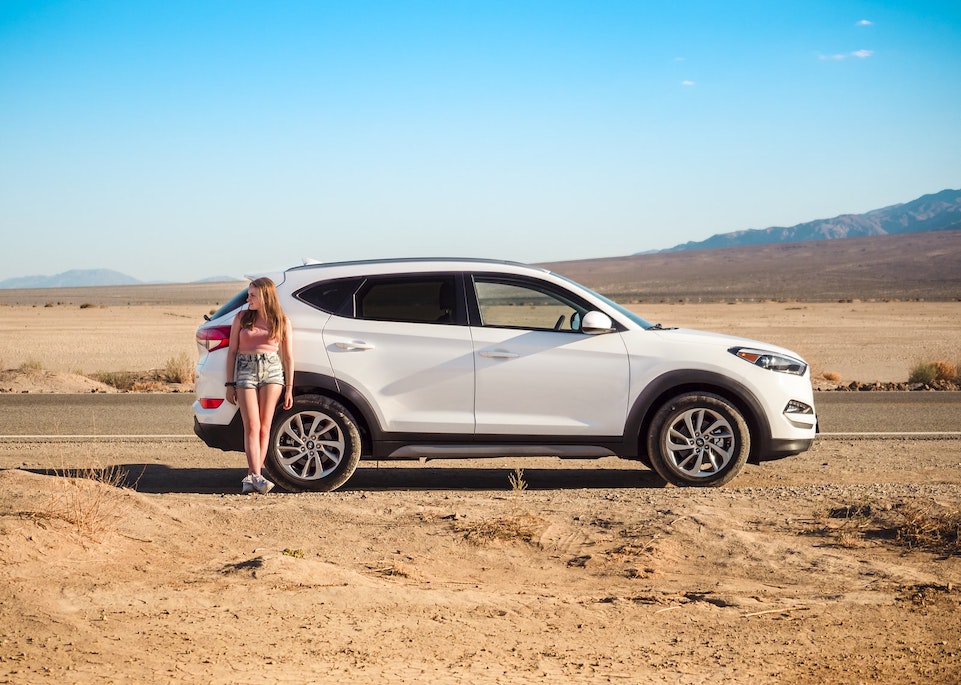
The debate between rear-wheel drive (RWD) vs front-wheel drive (FWD) has been raging for years, and the truth is, there is no clear winner – both have their pros and cons. Then there are also four-wheel drive and all-wheel drive, which are similar but not quite the same. Generally, unless you live in an area with a lot of snow and ice or do a lot of off-roading, you probably don’t need four-wheel or all-wheel drive. So which is better for your next vehicle: rear-wheel or front-wheel drive?
Advantages of Rear-Wheel Drive
Fans of rear-wheel drive claim that RWD vehicles handle better, especially around turns. In rear-wheel drive vehicles, power is delivered to the rear wheels, but the front wheels do the steering. Many drivers claim that this separation is an advantage because each set of wheels has just one job to do, so it puts an equal amount of stress on both the front and rear wheels.
Rear-wheel drive vehicles also have an advantage when towing trailers. The trailer’s weight gives the vehicle’s rear wheels more traction, which helps the front wheels maneuver more effectively. RWD vehicles can handle larger engines because the weight of the drivetrain is not in the front of the vehicle.
Disadvantages of Rear-Wheel Drive
Reduced traction is a disadvantage of rear-wheel drive vehicles, especially in areas that get a lot of rain or snow. It is harder for the driver to control a rear-wheel drive vehicle in these conditions. The decreased traction also makes it difficult to climb steep grades or maneuver on muddy or poorly maintained roads.
Because rear-wheel drive systems are more complicated, they also cost more to manufacture. This translates to a higher sticker price for the buyer.
Advantages of Front-Wheel Drive
Front-wheel drive vehicles tend to handle better in the snow because they generally have better traction. This increased traction also makes it easier to get out of a tough spot, such as mud or slush, since the front wheels pull the vehicle as opposed to the back wheels trying to push it.
Front-wheel drive vehicles have more room inside the passenger compartment because the transmission doesn’t need to go underneath the floor. FWD vehicles are cheaper to build, which means they are typically less expensive to buy. They also tend to have better fuel economy, which means you won’t have to fill the gas tank as regularly.
Disadvantages of Front-Wheel Drive
There is more weight in the front of a front-wheel drive vehicle, so they have a tendency to go wide when you take a turn too fast. The solution for this is to ease off the gas and slow down a bit, which is second nature for most drivers. However, this tendency increases the chances of a front-wheel drive vehicle going off the road sideways, which makes it more likely to flip or rollover. This is a safety concern you should be aware of if you choose a FWD vehicle.
Front-wheel drive vehicles tend to go through tires more quickly than rear-wheel vehicles, leading to higher maintenance costs. They also tend to develop torque steer, a condition in which the vehicle pulls to the left or the right.
Rear-wheel Drive vs Front-Wheel Drive: Which Is Best?
Ultimately, you need to decide whether it is more important to have better control while steering or better traction and a more economical and fuel-efficient car. There is no right or wrong answer; it’s just a matter of which you prefer.
If you live in Arizona and are in the market for a vehicle but aren’t sure if you need one with front-wheel drive or rear-wheel drive, the team at Auto Action can help. We have a wide selection of quality used cars to choose from!
Sources:
AWD vs 4WD: What’s the Difference?
https://www.edmunds.com/car-buying/awd-vs-4wd-whats-the-difference-and-which-to-choose.html
FWD vs. RWD: Which Is Best for You?
https://cars.usnews.com/cars-trucks/fwd-vs-rwd
FWD vs RWD – What’s Better?
https://www.autolist.com/guides/fwd-vs-rwd
